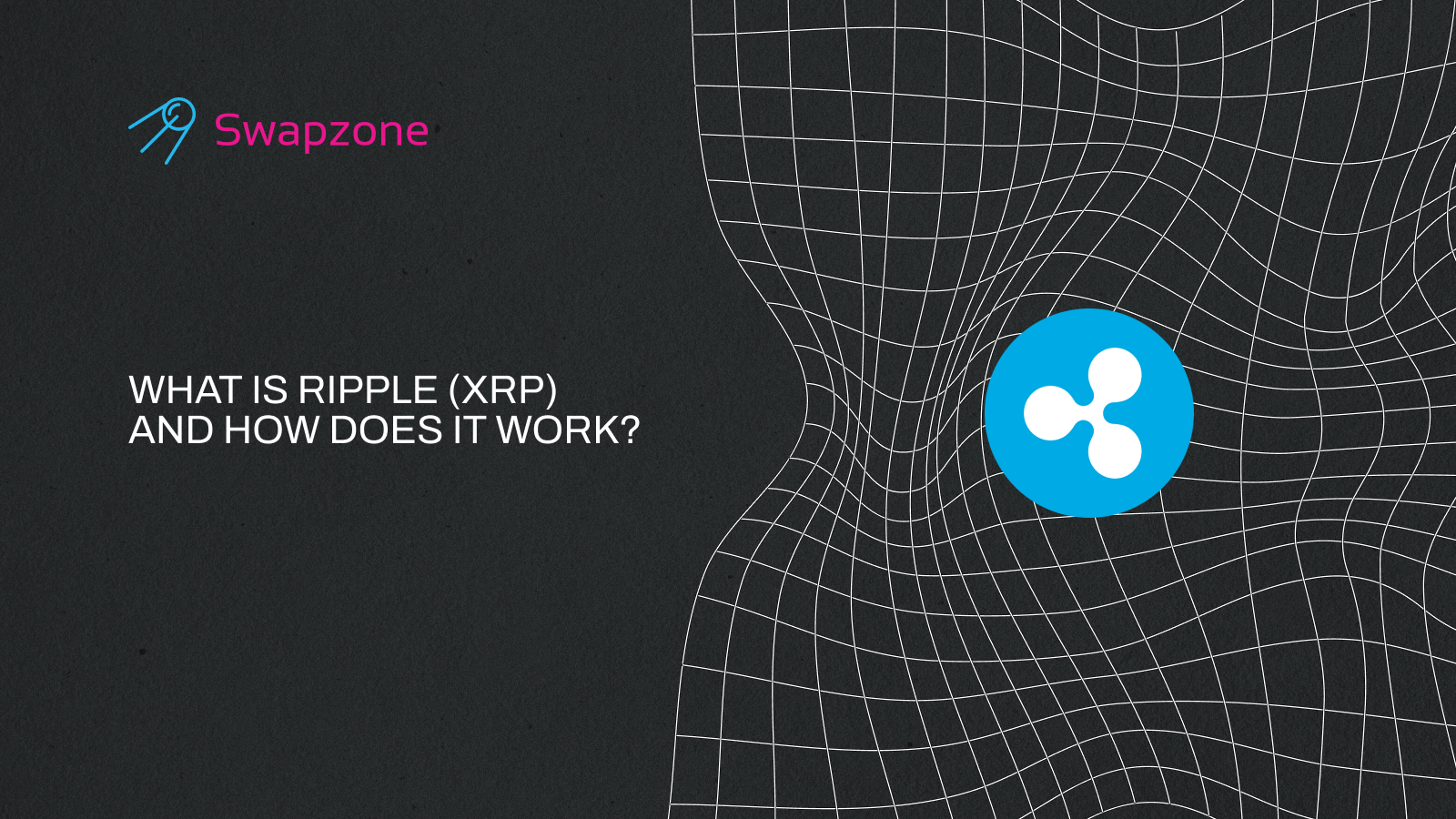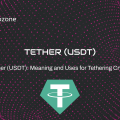What is XRP (Ripple)
XRP or Ripple are digital assets and are among the most successful cryptocurrencies aimed at making cross-border payments faster and easier. However, it is evident that the Ripple protocol does not need mining like many other cryptocurrencies like Bitcoins; therefore, it is energy-wise. It is to be used by banks and other financial organizations to enable them to gain the trust that they deserve.
Advantages of XRP (Ripple)
XRP offers a high transaction speed due to one of its most significant benefits. For example, while confirming a transaction in the Bitcoin blockchain can take up to a period of 10 minutes or more in some occasions, it only takes a few seconds to complete a transaction in the XRP blockchain.
XRP has a high scalability performance compared to other cryptocurrencies. Ripple network can handle up to 1,500 transactions per second which clearly stands itself above many other cryptocurrencies. It can therefore be applied use in large financial systems and especially for massive payment solutions. That is why XRP is an efficient means of transferring money internationally, and time is an essential factor in such operation.
Furthermore, one more advantage of using XRP is that it is rather cheap when it comes to transactions. As it has been seen, undertaking transfers through standard banking systems may be costly; however, the cost of undertaking transactions in Ripple is negligible hence potentially saving costs to both the sharers and the recipients.
However, the most advantageous aspect of XRP is its energy consumption advocacy. XRP is also not a mined coin; it does not require the same amount of energy that is required for mining Bitcoin in circulation.
Below is a chart illustrating the growth in popularity of XRP over the past few years:
“`
| Year | XRP Market Capitalization (billion $) |
+—————-+———————+
| 2013 | 0.1 |
| 2014 | 0.3 |
| 2015 | 0.5 |
| 2016 | 1.0 |
| 2017 | 20.0 |
| 2018 | 10.0 |
| 2019 | 8.0 |
| 2020 | 10.5 |
| 2021 | 15.0 |
| 2022 | 18.0 |
| 2023 | 25.0 |
+—————-+———————+
“`
Factors Contributing to Popularity
- Technological Advantages: This is due to the factors such as high transaction speed, scalability, and being energy-efficient that makes XRP useful to financial institutions as well as private investors.
- Partnerships: Working with large banking institutions and payment systems contributes towards the enhancement of confidence in the usage of XRP in real-life scenarios.
- Investments: This has boosted the interest of the public in Ripple and also have enabled Ripple Labs make more improvements in the technology.
- Real-world Applications: This sustainable value gives the XRP a purpose in international money transfers and interbank settlements and makes users interested.
Analysis of XRP Profitability
The opportunity for investing in XRP as a promising currency can be characterized by its profitability depending on market conditions. Investing in cryptocurrency, XRP gives high yields during periods of a growing market, but this comes with high risks and fluctuations. Nevertheless, the application possibilities of the XRP in real-life scenarios, like cross-border payments, provide it with long-lasting use.
Comparison with Global Profitability
Comparing the value of XRP with other valuable investments such as stocks, bonds, as well as other digital currencies makes the following observations possible.
Cryptocurrencies:
Bitcoin (BTC): Bitcoin is regarded as being digital gold and is the first cryptocurrency and the most famous. While Bitcoin is established and employs mining and a longer time of confirming transactions, Bitcoin’s profitability is also accompanied by high risks in the sense that its value is highly volatile. But within the last decade, Bitcoin has delivered unprecedented returns to investors and has made many early adopters rich.
Ethereum (ETH): Due to features like smart contracts and decentralized applications, Ethereum is popular among developers and investors. Profitability also varies but has risen noticeably over the past years.
Factors Affecting XRP Profitability
The profitability of XRP is determined by several factors:
- Market Conditions: Similar to other cryptocurrencies, XRP has its value which works in accordance with market trends. These factors consist of fluctuations in the supply and demand of Crypto-assets, news and events associated with the Crypto-assets market.
- Technological Innovations: Technological advancements and enhancements to Ripple’s system could have an impact on the profitability of XRP.
- Regulatory Changes: It is also important to mention that volatility and shifts in legislation and regulations can affect XRP value. For instance, litigation cases with the SEC in the US caused fluctuations in the XRP price, although for a brief period.
- Real-world Applications: Other advantages of XRP include its high level of usage in effected international money transfers and interbank transactions.
History of XRP (Ripple)
Key Development Stages
2012: Ripple Labs incorporated in 2012
Ripple Labs was established in the year 2012 by two people, Chris Larsen and Jed McCaleb. The company was initially formed to provide an efficient, quick, and cheap payment mechanism for the financial institutions globally. It also important to state that unlike other cryptocoins, for instance, bitcoins, XRP was initially created not as a crypto currency to be mined. It was unique and also it reduced greatly the energy costs of utilizing it.
2013: The first products & The launch of the Ripple Network
Ripple labs introduced the Ripple network in 2013 and several of its products sought to streamline cross-border transactions. The major innovation was the distributed ledger technology that assisted in tracking and confirmation of transactions in real-time. This approach could not fail to draw the attention of financial institutions and investors alike at first instance.
2014: Investment Attraction and Expansion
For Ripple Labs 2014 proved to be an important year. Recently, it managed to receive quite a large amount of funding from several large venture funds and private investors. Such funds were targeted at the growth of the company’s activity, modernization of the network, and the introduction of new services. At the same time, Ripple Labs started working with banks and financial institutions all around the globe, thus helping to popularize the use of XRP.
2015-2016: Foreign acceptance and affiliation
In the year 2015-2016, Ripple Labs extended it services and started building more connections. It signed partnership with financial behemoths including Santander and American Express enhancing the visibility of the Ripple’s technology and building credibility into the platform. Beginning from this period, XRP was actively implemented for international money transfers and inter-banking transactions.
2017: Rising Demand & Market Valuation
However, the focus is placed on the fact that XRP rose in popularity in 2017. The market capitalization of the currency went up significantly thereby ranking the currency among the 5 biggest cryptocurrencies. This was not only because XRP offered the technical edge but because it was backed by the fiats of the financial institutions and investors. At this time, Ripple Labs also introduced a number of new products and services that are focused on the integration of XRP for its utilization in various economies.
2018-2020: Technological advancement and ecosystems growth
From 2018 to 2020, Ripple Labs was focused on building up its technologies and a universe of partners. The company also focused on enhancing the Ripple Networking on new services introduction and partners’ attraction. New partnerships were established with banks and financial institutions around the globe, which helped increase XRP’s demand.
2021-Present: Challenges and Adaptation
Since 2021, Ripple Labs has had the following challenges: Legal battles with the SEC, which accused XRP of being an unregistered security. Nevertheless, the company has worked on upgrading its technology, and the application of XRP has ramped up. Thus, in response to the new conditions, the Ripple Labs company changed and remains one of the main players in the cryptocurrency market.
Comparison with Bitcoin
This paper focuses on the main differences between the two leading cryptocurrencies, XRP and Bitcoin, in terms of their properties and uses. Bitcoin, launched in 2009 by an unknown individual or group under the pseudonym Satoshi Nakamoto, is the world’s first cryptocurrency. It was created as an electronic monetary system outside the control of governments or financial systems. Bitcoin is a digital currency that utilizes the blockchain system, and the process of approval of transactions is called mining.
Transaction Speed
XRP has a high transaction speed: confirmation of transactions takes only a few seconds. On the other hand, a Bitcoin transfer may take anywhere from a few minutes to an hour; hence, XRP is more ideal for rapidly transferring funds.
Scalability
With all these features, the Ripple network can handle up to 1,500 transactions per second, while the Bitcoin network can handle only about 7. This makes XRP more useful for consumption in large financial systems and in making massive payments.
Energy Efficiency
It does not need mining similar to bitcoin, and therefore, it would be more efficient in terms of energy usage, unlike bitcoin.
Advantage of Bitcoin: Decentralization
One of the main benefits of Bitcoin is that it is decentralized. This means that no single entity owns or controls Bitcoin as it is a completely decentralized network. This makes Bitcoin more resistant to manipulation and censorship: Unlike Bitcoin, XRP is managed by the company Ripple Labs and this has caused some concern among the users regarding its centralization and influence by the company.
Why Invest in XRP
- Fast Transactions: Perfect for cross-border remittances.
- Low Fees: reduces the overall transaction cost.
- Scalability: It has the ability to handle a large amount of transactions.
- Support from Financial Institutions: It is applicable to banks as well as other financial institutions.
- Energy Efficiency: However, an important advantage is that it does not imply large energy consumption.
Disadvantages of XRP (Ripple)
Despite all its advantages, XRP has its drawbacks:
Centralization
One of its drawbacks is that XRP is owned and regulated by Ripple Labs, thus it can manipulate the prices. It poses various issues with proponents of decentralization and the independence of cryptocurrency. A large part of tokens is owned by Ripple Labs, and this gives them significant control over the fate of the currency and its price.
Volatility
Like every other cryptocurrency in existence, using XRP as a tradable asset entails the risk of high price fluctuations. It is still quite risky for people to invest in XRP given the volatility of the market and what that can do to its value. This means that the firms must be ready for losses to occur or be incurred in their business ventures.
Regulatory Risks
Therefore, some of the factors that can influence the usage of cryptocurrencies include legal reforms. Regulatory risks can also affect XRP. Amendments to the legislation or relevant governmental resolutions can have a much more substantial impact on its value and usage. For instance, affecting the price of XRP, legal trials with the SEC in the USA resulted in temporary volatility.
Bottom Line
In conclusion, making use of XRP (Ripple) as a cryptocurrency of choice has many benefits, which include high speed of transaction, very low charges to effect a transaction, and many financial institutions endorsing it. But, like any other investment, it means exposing your capital to possible risks associated with investing in XRP, such as centralization and volatility. Before any investor opts to invest in this cryptocurrency, there are aspects that they should carefully consider. XRP has potential that can be deemed promising and potential for those interested in non-traditional forms of investment.


